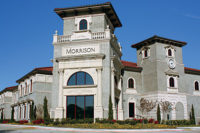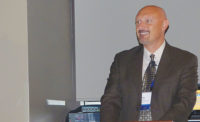Distributor personnel probably aren’t aware that when they call a credit card company, the person they are talking with could be located in India, Russia, China or some other foreign country. The term for moving customer support and other people-functions to a foreign country is “offshore outsourcing,” and it’s a hot trend that will continue growing. Offshore or foreign outsourcing of customer support could even be used by the companies that provide the business software used by most PHCP, HVACR and PVF distributors. Let’s look at why this trend came about, and its pros and cons for distributors.
Money, as usual, was the reason foreign outsourcing came about, and it was software developers who started it. Thirty years ago foreign companies were creating software for their part of the world (e.g., Asia), and eventually these companies were hired to do programming for American firms — because foreign companies paid their people much lower wages. But the data transmission circuits back then were so slow and unreliable that the programs created abroad were shipped to the United States in the form of physical media (such as tape reels); several iterations and shipments were usually needed to get a clean program. So, even though labor abroad was cheap, the need to ship programs stretched the development cycle to the point where few American companies used foreign programming.
Blame It On The High Tech Boom, Again
Along came the 90s. Millions of people abroad learned about information technology. Telecom companies installed more high-speed circuits than the world needed. The combination of fast circuits and mass education enabled anyone sitting anywhere in the world to do what in-house programmers here were doing — in “real time” — accessing the main computer programs and data needed to create programs, and then quickly creating programs right on the main computer. No longer faced with stretched development cycles, American companies greatly increased their use of foreign sources of high-quality programming and software development.High-speed circuits were also used for phone conversations (with voices changed to digital bits and then back to voices). A clear telephone conversation could take place between two people anywhere on the planet. And high-speed circuits also meant that a customer service person accessing computer data could be sitting anywhere on the planet. Phone conversation + access to data + cheap wages = American companies move call centers abroad.
At first, call center functions were outsourced to (independently owned) call centers in low-wage English-speaking countries like Ireland and India — yes, most Indians speak English. Employees who spoke accented English were given an immersion course in accent-free English, and taught about the basics of American culture so they could cleverly deflect any questions about where the support person was situated. (Culture courses addressed things like the names of the 50 states; current popular political, television, movie and sports personalities; and U.S. history.)
When wages in those countries rose too much, call centers were relocated to lower wage “emerging” countries like Russia and China, where employees were given the same immersion courses and intense U.S.-culture training that had been used to set up the first foreign call centers. (Some call centers were set up in Canada because the U.S. dollar bought so much more, and there was little need for culture training. But Canadian wages are so much higher than those in India, etc., that few centers have been set up.)
Current Foreign Software Support
Today, foreign call centers have gone beyond answering simple questions and provide support for users of many brands of hardware, including American brands. And foreign call centers support users of software from multi-national giant software companies — those with annual sales in the billions of dollars. Aside from high-speed circuits, another reason that software support could be outsourced is that it requires much less technical knowledge and skill than creating the software users call about — the vast majority of user questions concern elementary “problems.” It’s easy to quickly train someone in the basics, and every support center has an expert available, sooner or later, to tackle a question that the front-line supporters can’t answer. Thanks to high-speed circuits, foreign support personnel can dial into a company’s system and diagnose problems, just as domestic support personnel can do.Aside from technology, politics has played a role in the recent growth of foreign support centers. During the technology boom, Congress increased the quota for the temporary work visas that American firms used to bring over tech workers, including support people. With the tech bust has come a reduction in the size of that quota, and a return home of many foreign high-tech workers, so instead of bringing people over here, more people abroad were hired.
None of the foreign call centers, to the best of this author’s knowledge, provides support to users of the business software typically used by PHCP, HVACR and PVF distributors — not yet. But it is possible that the few PHCP/HVACR/PVF distributors who use software from those multi-national companies are getting support from a foreign call center. (These giant software companies also long ago outsourced a chunk of their R&D, which is a move that could be made by the developers of the software typically used by PHCP/HVACR/PVF distributors.)
The Pros
Looking at the experiences of user-companies that already receive their support from centers abroad, it’s easy to see the benefits of this arrangement — benefits that PHCP/HVACR/PVF distributors might get some day.Foreign support centers tend to be heavily staffed, so there are more support people available — not just because wages are low, but because the foreign centers handle users in multiple countries and time zones. And foreign support centers are staffed 24/7. Distributors that work weekends and have users on second and third shifts get live after-hours software support at a slight, if any additional charge vs. the usual Monday through Friday, 8 a.m. to 8 p.m. live support hours (with after-hours’ calls handled via “beeper support,” a call back from a support person on call). Live support 24/7 means that after-hours questions are answered immediately, often avoiding problems, and it means that after-hours problems are often resolved before business operations get hectic again. (Remember, support personnel can dial into a company’s computer to look for the source of problems.) Even a distributor that operates Monday through Friday 7 a.m. to 6 p.m. would benefit from 24/7 support if current support hours are 8 a.m. to 8 p.m. in the time zone of the provider, and that provider is two or three time zones away.
Being put on hold for more than a few minutes will become a pain of the past, because there are simply more support people available.
The rate of increase of annual support fees, always an unpleasant subject, will slow down or maybe even decrease as competition in software sales heats up in the years ahead.
The Cons
On the negative side, although foreign support tends to cost less over the long run, it results in the loss of American jobs, which in turn can result in lower sales for PHCP, HVACR and PVF wholesalers and distributors.Foreign software support personnel usually don’t know the ins and outs of a distribution business (e.g., the critical role of matrix pricing). This can result in distributor personnel and support people spending more time solving a “problem” than would be needed if a distribution-knowledgeable support person were tackling the question. In the case of a severe problem, foreign support people cannot “walk down the hall” and consult with the programmers who wrote and maintain the software. Similarly, foreign support people can’t interact face-to-face with these programmers and don’t know about upcoming improvements that haven’t been announced. Also, if foreign support people are not in Canada but overseas (as most are these days), they rarely attend user conferences, and so don’t learn about problems and requests for enhancements that haven’t been officially reported.
Some distributors may not feel comfortable allowing foreign support people to have access to the company’s confidential information.
Finally, there is an increased risk of a virus being introduced when numerous foreign support people can dial into a distributor’s computer (to help answer a question or solve a problem).



